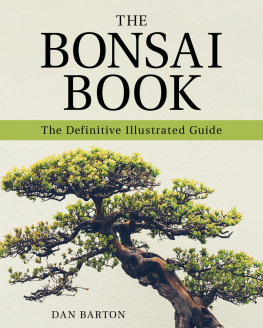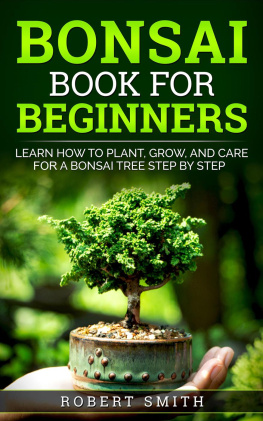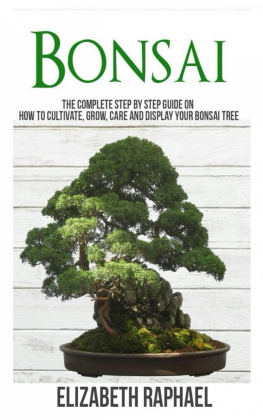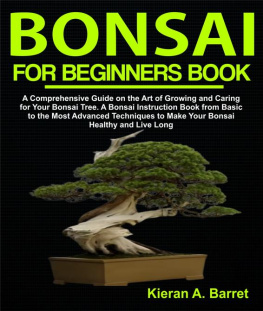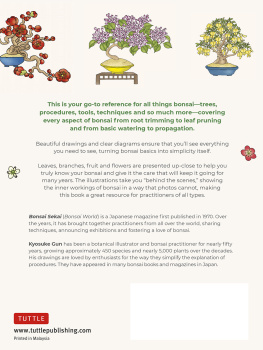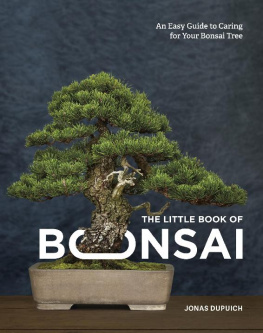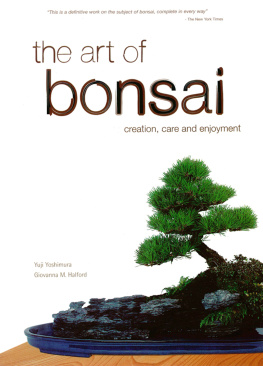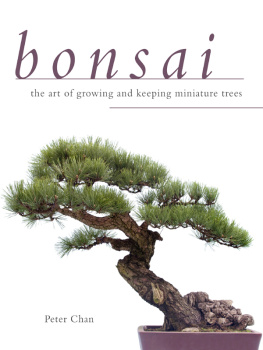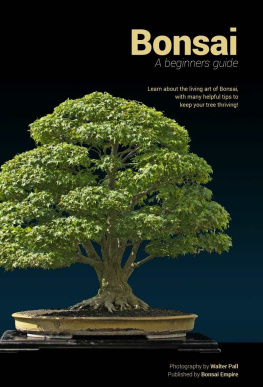
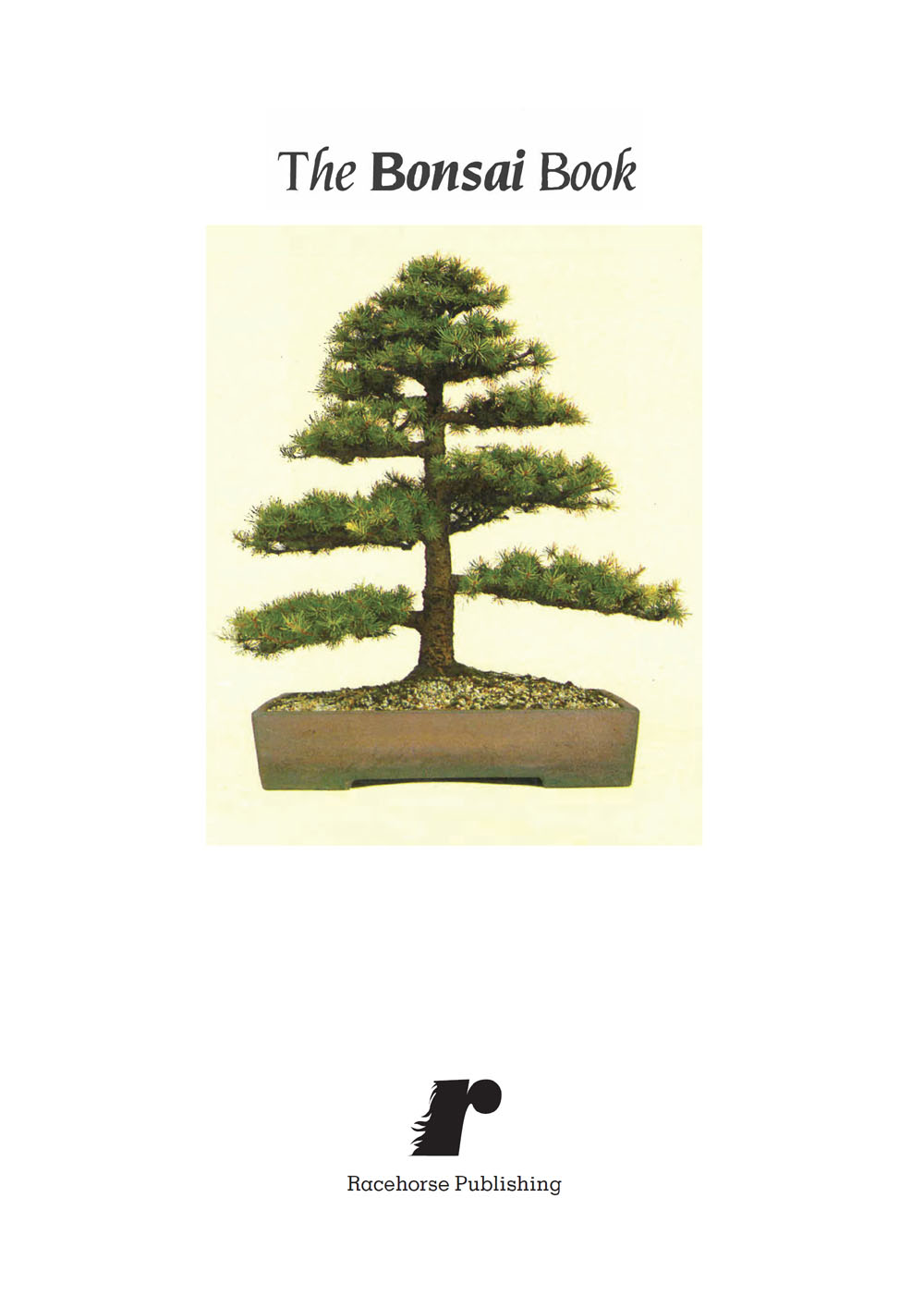
Dan Barton
The Bonsai Book
The Definitive Illustrated Guide
Copyright Dan Barton, 1989
First Racehorse Publishing edition 2019
First Published by Ebury Press, part of Ebury Publishing, a division of The Random House Group Ltd
All Rights Reserved. No part of this book may be reproduced in any manner without the express written consent of the publisher, except in the case of brief excerpts in critical reviews or articles. All inquiries should be addressed to Racehorse Publishing, 307 West 36th Street, 11th Floor, New York, NY 10018.
Racehorse Publishing books may be purchased in bulk at special discounts for sales promotion, corporate gifts, fund-raising, or educational purposes. Special editions can also be created to specifications. For details, contact the Special Sales Department, Skyhorse Publishing, 307 West 36th Street, 11th Floor, New York, NY 10018 or .
Racehorse Publishing is a pending trademark of Skyhorse Publishing, Inc., a Delaware corporation.
Visit our website at www.skyhorsepublishing.com.
10 9 8 7 6 5 4 3 2 1
Library of Congress Cataloging-in-Publication Data is available on file.
Cover design by Mona Lin
Designers: David Playne, Miles Playne, and Karen Wilson
Editors: Gill Davies and Alison Goldingham
ISBN: 978-1-63158-379-7
Ebook ISBN: 978-1-63158-380-3
Printed in China
For Cecilia, Julian, Philippa, Henry and Daniel with all my love
Contents
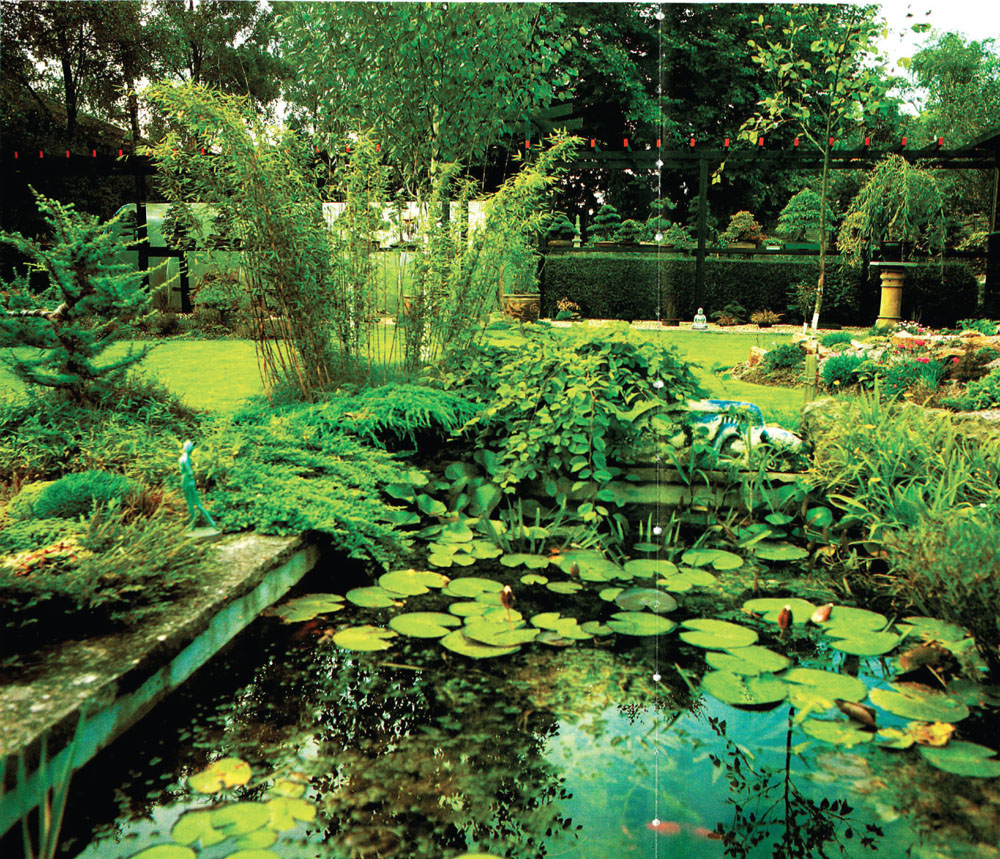
The authors garden
Preface
The idea of writing a book on Bonsai occurred to me shortly after I became involved with the art in 1969. In those days there were very few books available on the subject in England, so it was difficult for me to find information of any real consequence. I therefore resolved to pursue my own researches and to conduct a number of experiments from which I could gain more practical knowledge about growing trees in miniature. I had no idea at the time what an extensive undertaking this would prove to be, and if I had, I think I would probably never have bothered to continue with the project. I am now very glad that I did, as the direct experience has proved much more valuable to me than anything else that I have done.
All of the practical techniques, hints and tips described in this book are based on my own personal experiences with the subject of Bonsai and on extensive discussion with friends, and can therefore be offered as tested and proven fact. The selection of photographs that I have included to illustrate any salient points are evidence of this.
My original intention in writing the book was to supply usable information based on the extensive records that I have maintained on the various trees in my collection, and to show how each of these trees has progressed individually. I achieved this by making innumerable photo records with written notes on each tree every year. In this way, I hoped to demonstrate that reasonably convincing results could be achieved in a relatively short space of time. I considered that if I could do this successfully, it would encourage others, who might otherwise be put off by the time factor involved, to gain the necessary confidence to make a start. This, therefore, was the basis of my thesis and I hope that the examples I have included in will illustrate the point. Each of the trees featured here has been subject to one or other of the many techniques or structuring concepts described in the book and the results are well within the capabilities of most people.
Wherever possible I have tried to convey my ideas, whether philosophical or technical, in such a way that they will provoke further thought and not just provide sets of instructions to be obeyed without question. If this were the case, it would contravene any principles I have as an educationalist and mean that I would have failed in my efforts.
It is therefore a pleasure and a privilege for me to share my experiences and any skill I may have acquired with you, and hope that in time you too will gain from these experiences and add some of your own innovative ideas to this most fascinating and fulfilling subject.
Dan Barton.
Bonsai A way of life
Today is or was yesterdays tomorrow
Bonsai is for most people essentially a practical hobby and the general consensus of opinion is that it originated in China several centuries ago. However, this practice of growing plants and trees (mostly flowering cherries, pines and chrysanthemums) in pots can hardly be referred to as Bonsai in the way that we know it today. These potted trees were probably used for social or religious ceremonies as well as for decorating the home and were occasionally depicted on ancient Chinese scrolls. They are considered in the context of Bonsai probably because the illustrations suggest that they have been intelligently pruned and positioned within their pots.

A typical tree solid and reassuring
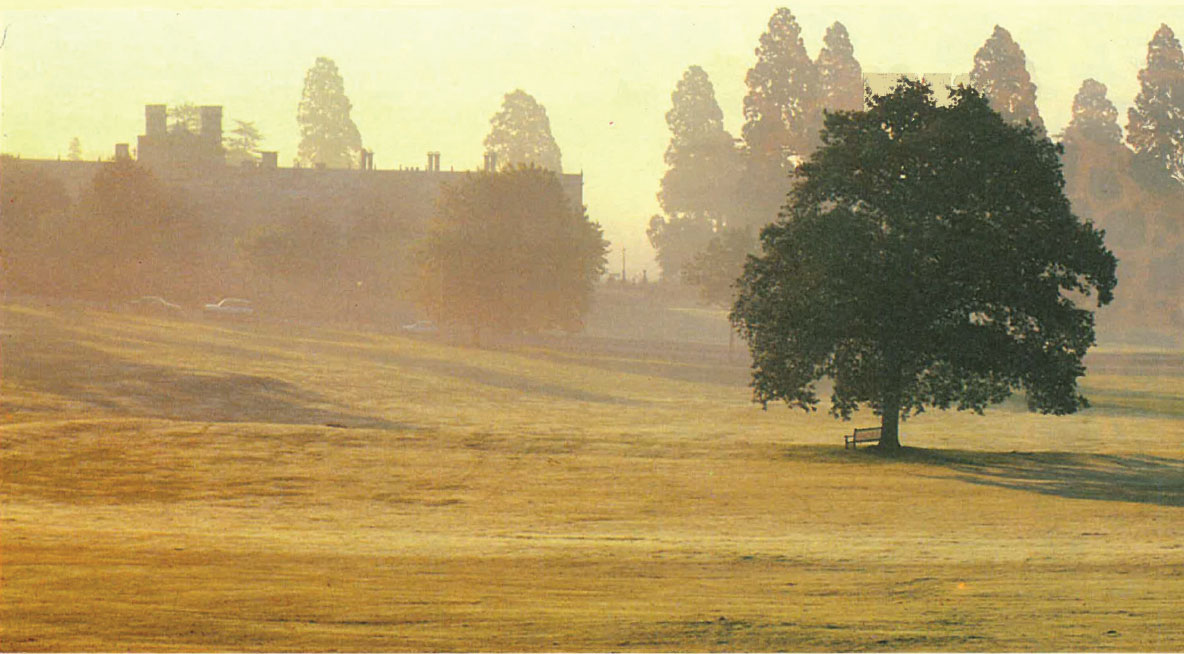

Trees come in all shapes and sizes
Bonsai is about trees; trees grown in miniature. It is also about time and space and about life and attitudes.
At a transcendental level Bonsai can be the intermingling of spirits, of concepts and attitudes, affecting both the trees and the Bonsai enthusiast. Equally, Bonsai can be just another horticultural pastime requiring no more than a measure of common garden sense, some artistic ability and plenty of patience.
Whatever significance Bonsai may have for the individual is open to interpretation. If rules are to be laid down then it is my conjecture that these rules should serve as no more than guidelines or a lot of stereotype trees are likely to result. I sincerely hope that anything written in this book is seen purely as a suggestion or stimulus, hopefully triggering off ideas and associated theories or techniques that the reader may have experienced or, would like to experience.
Art is something that is often expressed intensely, and though it may respect many traditional attitudes and philosophies and be the result of well-established techniques, it nevertheless always offers the artist the opportunity for further experimentation and personal expansion.
Break the rules to make the rules! But first, what are the rules? Dare I commit myself in saying that there arent any, or at least none that are absolute. Yet this book is crammed full of ideas and techniques and what would appear to be rules. However, this is all that they are; ideas, techniques and disciplines (rule is too strict a term) that I have experienced over many years and which I now offer to you for consideration and possible use. Bonsai and its artistic expression is about mental images responding to aesthetics, which is defined as that branch of philosophy dealing with the nature and perception of the beautiful. The practical (horticultural) side allows these images to be applied in respect of any given tree and all that can be associated with it: its typical form, the environmental influences that might modify this shape or the abstract ideas that might have a bearing on it.
Next page
